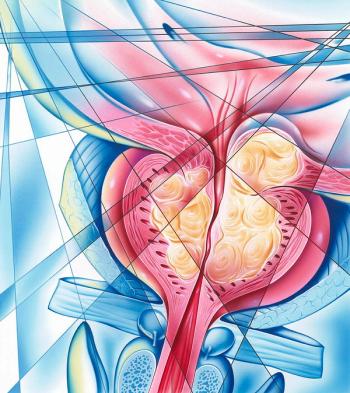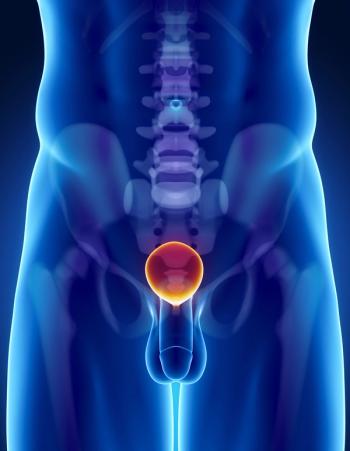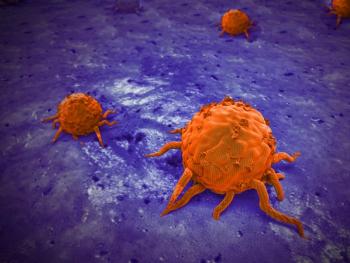
- ONCOLOGY Vol 14 No 3
- Volume 14
- Issue 3
Prostate Surgeries: Average Charges Throughout the United States, 1997
American men and women are living longer than ever before. The gender disparity in life expectancy is narrowing, as the increase in longevity among men continues to outpace that among women. The projected life expectancy of a boy born in
American men and women are living longer than ever before. The gender disparity in life expectancy is narrowing, as the increase in longevity among men continues to outpace that among women. The projected life expectancy of a boy born in 1998 is 73.7 years, almost 2 full years longer than that of a boy born between 1989 and 1991. This rise contrasts with that for baby girls, whose life expectancy for those born in 1998 is estimated to be 79.3 years, just half a year higher than that of girls born between 1989 and 1991.
Accompanying these total increases are growing proportions of both genders over age 64 years. In 1998, close to 11% of men and 14.6% of women were 65 years of age or older. These proportions are projected to reach 19% and 21%, respectively, by the middle of the 21st century.
Trends in Incidence of Prostate Disease
As longevity increases, diseases of older ages will also become more prevalent. Among men, prostate diseases (both benign and malignant) are expected to continue being the most prominent health concerns for those over age 50 years. Prostate cancer is principally a disease of older men, with more than 80% of cases diagnosed in men over 65 years of age. The age-adjusted incidence rates for prostate cancer increased some 13% per year between 1984 and 1992, primarily because of the widespread use of the prostate-specific antigen (PSA) test.
Since peaking in 1993, incidence rates of prostate cancer have dropped 17% (Figure A). However, even with this decline and a 10% drop in mortality since 1991, prostate cancer remains the leading major malignancy among males, and its mortality is second only to that of lung cancer. The American Cancer Society estimated that 179,300 men were diagnosed with and 37,000 died from prostate cancer in 1999.
Benign prostatic hyperplasia (BPH), a condition with symptoms very similar to those for prostate cancer, is even more common. During 1997, BPH diagnoses outnumbered those of prostate cancer in nonfederal, short-stay hospitals in the United States by 1.85 to 1 (380,000 and 205,000 cases, respectively). As with prostate cancer, BPH is usually diagnosed in men over age 50 years, with histologic evidence apparent in more than half of men over 60 years of age and in about 90% of those age 85 years.
Radical Prostatectomy and TURPWhile less invasive methods of dealing with BPH and other causes of urinary obstruction continue to be investigated and developed, surgery (either radical prostatectomy or transurethral resection of the prostate, [TURP]) remains the principal treatment for major prostatic problems. The radical (or open) prostatectomy is more frequently used in cases of localized prostate cancer and/or for very large prostates, whereas a TURP is usually performed for benign hyperplasia of the prostate with obstruction.
Both TURPs and open prostatectomies are widely used throughout the world. Transurethral resections of the prostate remain the most commonly performed urologic procedure in this country, currently outnumbering radical prostatectomies by about three to one (Figure A).
Although TURP is a complex operation, the morbidity and mortality associated with it continue to be low, and the length of hospital stay remains significantly shorter than that for a radical prostatectomy. Since 1987, there has been a general decrease in the number of TURPs performed in US nonfederal short-stay hospitals but a fairly steady increase in the number of radical prostatectomies performed. Transurethral resections of the prostate decreased by about 59% between 1987 and 1997, dropping from 379,000 to 157,000. The number of radical prostatectomies, however, increased fourfold over this period, rising from 13,000 in 1987 to 52,000 in 1997.
Increasing medical/surgical costs, the frequency of these surgeries, and the debates about the necessity or efficacy of so many TURPs prompted MetLife researchers to reexamine the issue using 1997 group health hospital claims data for the procedures. Average charges associated with both surgeries were investigated from a data set merged and edited by Corporate Health Strategies, Inc.
The Metropolitan Life Study
More than 603,000 hospital claims records were reviewed from a select portion of patients covered under MetraHealth Group Health contracts in 1997. Of these claims, 42% (251,903) were for men, of which 6.2% were for major diagnostic category (MDC) 11, Diseases/Disorders of the Kidney and Urinary Tract, and MDC 12, Diseases/Disorders of the Male Reproductive System. Of the MDC 12 diagnoses, 35% were for BPH and 16% were for a malignancy. Over 2,100 radical prostatectomies (defined by CPT codes 55810-55815 and 55840-55845) among men over age 30 years were identified from these two MDC data sets. In addition, close to 2,200 men over age 30 years had claims for a TURP (CPT code 52601) during the year.
The patients who underwent a TURP were substantially older than the men who underwent open prostatectomymodal ages of 72 and 63 years, respectively, and median ages of 70 and 61 years. Virtually all of the radical prostatectomies (99%) were for a malignant neoplasm of the prostate. Just over three-fourths of the men who had a TURP procedure were diagnosed with BPH, followed by cancer of the prostate in another 13%. Data are presented for all states with more than five procedures but are highlighted and discussed for those in which 40 or more were performed.
Geographic Variation in Radical Prostatectomy Charges
The average total charge to insurance for a radical prostatectomy in 1997 was $16,990 among 2,149 procedures. Among geographic regions, the total charges (hospital plus physicians) varied by 35% (Table 1 and
There was almost a twofold difference in charges between the states with the highest and lowest totals, and these states were within the same region, eg, the Pacific area of the country (Table 1). Within this region, and across the United States as a whole, the charges in California were the highest, over $23,600, which is 39% above the norm. Washington state reported a total charge almost half this amount, $12,020 (29% below the US average). Only three other study states (Illinois, Florida, and New Jersey) had charges more than 10% above the average, whereas six additional states (Georgia, Tennessee, Pennsylvania, Indiana, Maryland, and North Carolina) reported total charges that were 10% or more below the norm.
Hospital ChargesRoom and board plus ancillary fees comprised the hospital portion of the average total charges and accounted for 63% of the total bill. This proportion varied from 71% in California to 52% in Maryland. Hospital charges averaged $10,620 across the country and ranged from $16,740 in California (57% above the norm) to $7,300 in Maryland and $7,310 in Washingtoneach 31% lower than the United States average.
Ancillary fees (eg, operating room, laboratory fees, pharmacy charges) averaged $6,760 and accounted for 64% of the total hospital charge. Their share ranged from 46% in New York and Missouri to 79% in North Carolina. Ancillary fees over $8,000 (more than 19% above the norm) were reported in Colorado, New Jersey, California, and Florida. These fees are contrasted with those reported in Missouri and New York ($4,640 and $4,630, respectively) each around 31% below the norm.
The room and board charge averaged $3,860 and ranged from more than twice that in California ($8,200) to less than half that in North Carolina ($1,620). This range represented a difference of more than 400% between the high and low charges.
Physicians ChargesSurgical and medical doctors charges for an open prostatectomy averaged $6,370 and differed by 44% between states. The highest doctors fees were reported in New Jersey and New York, each over $8,000 (30% above the average), whereas in neighboring Pennsylvania (the other state in the Middle Atlantic region), physicians charges were the lowest$4,620 (27% below the norm). Three other study states had physicians fees 10% or more below the normLouisiana, North Carolina, and Colorado. Illinois was the only other state in which doctors charges were more than 10% higher than the norm.
Length of StayOn average, a man remained in the hospital for 3.75 days after a radical prostatectomy. Stays of 4 days or more were reported in New Jersey, Ohio, Florida, and North Carolina. Men in Missouri, Maryland, and Minnesota remained hospitalized for 3.28 days or less, which was more than 12% shorter than the average.
Geographic Variation in TURP Charges
The average total charge for a TURP was $6,620over $10,000 less than for a radical prostatectomy (Table 2). Once again, the highest regional charges were reported in the Pacific region ($9,060), where the average was 37% above the norm (Figure C). The Middle Atlantic region reported the lowest average total charge, $5,620, 15% below the norm. Three other regional areas had above-average chargesthe West North Central, Mountain, and West South Central.
Variations between states were a bit more pronounced. As with the open procedures, California led the study states with the highest total charge$10,170 for a TURP, which is 54% above the norm and 163% higher than Pennsylvanias low charge ($3,860). Minnesota and Arizona followed Californias high charge with totals over $8,000 (30% to 28% above the norm). In addition to Pennsylvania, three other states, Ohio, Michigan, and North Carolina, reported total charges 20% or more below the US average, ranging between $5,260 and $4,700.
Hospital ChargesOn average, more than two-thirds (68%) of the total charge was accounted for by the hospital chargeroom and board plus ancillary fees. This proportion ranged from 75% of the total in California and Arizona to 57% in Ohio. On average, the hospital charge was $4,490 but differed by almost 200% between study states. California, with its average of $7,600, was 69% above the norm and 193% above the low hospital charge reported in Pennsylvania ($2,590). Arizona and Minnesota had the second and third highest hospital charges, 42% and 41%, respectively, above the average. At the other end of the scale were Ohio and North Carolina, with hospital charges less than $3,000, 33% and 37%, respectively, below the United States norm.
Ancillary fees comprised 63% of the hospital charge and averaged $2,810 across the country. This proportion varied extensively, however, ranging from 80% and 81%, respectively, in Tennessee and North Carolina to 48% in Ohio. Ancillary fees were highest in Minnesota, Florida, and California, ranging from 67% to 32% above average and were lowest in Pennsylvania and Ohio, 41% and 49% below the norm.
Room and board fees averaged $1,690, with the highest charge again reported in California, 130% above the norm and more than seven times the low charge in North Carolina. Neighboring Arizona reported the second highest room and board charge, also over $3,000 and 89% above the US average. In addition to North Carolina, Pennsylvania, Wisconsin, and Tennessee each had room and board fees more than 40% below the norm.
Physicians ChargesOn average, the physicians charges for a TURP were $2,130. New Jersey, New York, and California each had doctors fees more than 20% above this average and more than twice the low charge in Pennsylvania. Physicians charges between 10% and 20% below the average were also reported in North Carolina and Michigan.
Length of StayAverage length of hospitalization for a TURP in 1997 was 2.80 days. This stay ranged from 3.25 days in the Middle Atlantic region to 2.27 days in both the Mountain and Pacific regions. New Jersey and New York had the longest hospitalizations, 3.51 and 3.31 days, respectively; Minnesota had the shortest among the study states, 2.14 days.
Discussion
The noted variations in charges for and distribution of prostatectomies and TURPs remain perplexing. Even as the charges decrease and length of stay is shortened, these surgeries are expensive, consuming a substantial proportion of the health care resources in the United States. Whether the noted differences reflect varying practice patterns, cultural predilections, patient preferences, socioeconomic factors, or lack of consensus about optimal care for and/or early detection and management of prostate diseases are issues to be studied further.
Clearly, the male population in the United States is aging. Estimates are that, by the year 2020, one in six American men (a projected 23.8 million) will be over age 65.18 years. With the growing number of older men, it seems prudent to direct attention and increase efforts to developing efficacious, less invasive, and less expensive treatment for prostate diseases.
Articles in this issue
over 25 years ago
FHIT Gene, Smoking, and Cervical Cancerover 25 years ago
IOM Medical Error Estimates Questioned, But Legislation ConsideredNewsletter
Stay up to date on recent advances in the multidisciplinary approach to cancer.



















































































